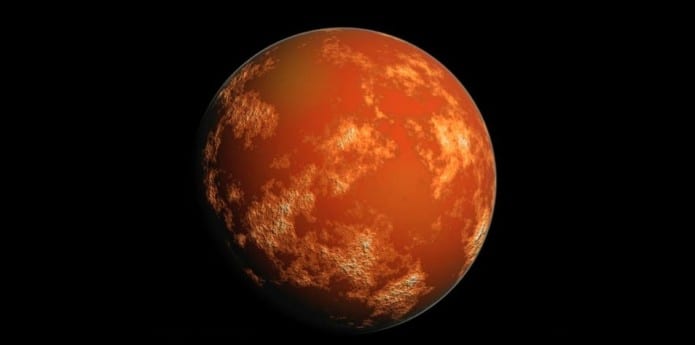Researchers invent a new technology by combining Raman spectroscopy and gas chromatography or mass spectroscopy to detect condensed aromatic carbon aka Aliens
For a long time the astronomical world was under the delusion that there existed alien life or “little green men” on planet Mars; however recent expeditions to Mars could not prove any trace of aliens on the ‘Red planet’.
Few researchers are pretty sure regarding the traces of ancient life on the planet because they feel that there exists some life supported element on Mars which we refer to as ‘water’.
However, considering the extreme harsh conditions that prevail on the surface of Mars most scientists feel that alien forms cannot survive on Mars.
The unmanned probes sent to Mars, by NASA and European Space Agency have provided some evidence that there did exist some life on the ‘Red planet’.
Two researchers, Alison Olcott Marshall and Craig Marshall, from the University of Kansas are engaged in finding the traces of life on Mars and they want to make sure that the evidence they provide is convincing.
Alison Olcott Marshall, assistant professor of geology at the University of Kansas said: “There has been a tremendous amount of very exciting findings this year that Mars once contained actively flowing, low-saline, near-neutral-pH water – pretty much the type of water where you find life on Earth today.”
Marshall added: “This has made people think that it’s possible that life could have existed on Mars, although most researchers agree it’s unlikely to exist today – at least on the surface – as conditions on the surface of Mars are incredibly harsh”.
Craig Marshall, associate professor of geology at University of Kansas said: “If we’re going to identify life on Mars, it will likely be the fossil remnants of the chemicals once synthesised by life, and we hope our research helps strengthen the ability to evaluate the evidence collected on Mars.”
These two researchers further claim that by using a combination of gas chromatography / mass spectroscopy with Raman spectroscopy can definitely aid in searching the traces of life on Mars. The technique invented by them is able to detect the condensed aromatic carbon which is thought to be a chemical signature of astrobiology.
Marshall and Craig would be using Raman spectroscopy to search for the carbonaceous materials from the fossilized remnants found on Mars which will aid in proving the traces of alien life on Mars.
Craig said: “Raman spectroscopy works by impinging a laser on a sample so the molecules within that sample vibrate at diagnostic frequencies.”
He further added: “Measuring those frequencies allows the identification of inorganic and organic materials. It’s insufficient because however the carbonaceous material is made, it will be the same chemically and structurally, and thus Raman spectroscopy cannot determine the origin.”
Raman spectroscopy is able screen the carbonaceous material; however it cannot determine the source of this material and hence researchers would be supplementing this technology with gas chromatography or mass spectroscopy so as to make sure that the traces of alien life is not only detected but also the evidence is made more conclusive.
Well, NASA’s Curiosity rover findings and Rover Environmental Monitoring Station’s (REMS) recordings of meteorological and geological information have recently reported that on certain nights traces of liquid forms have been found on the surface of Mars.

